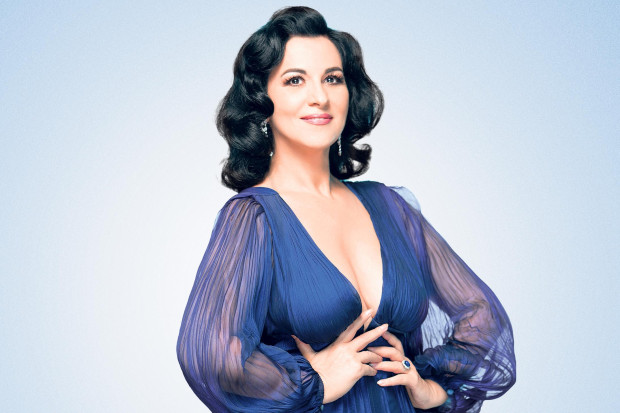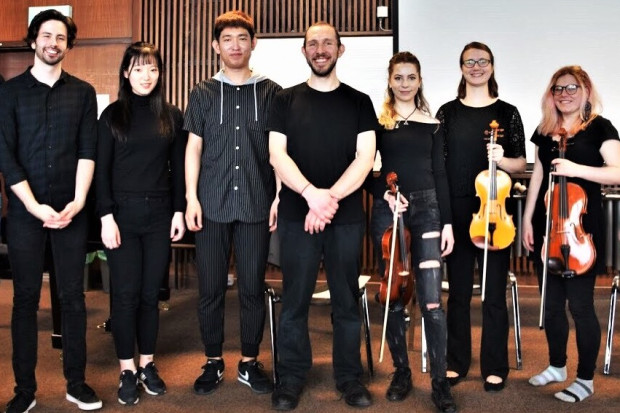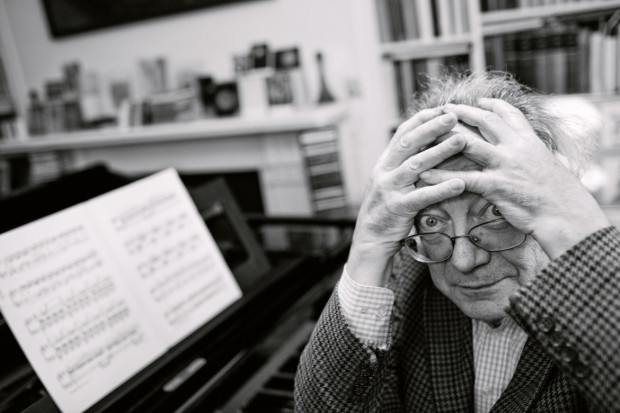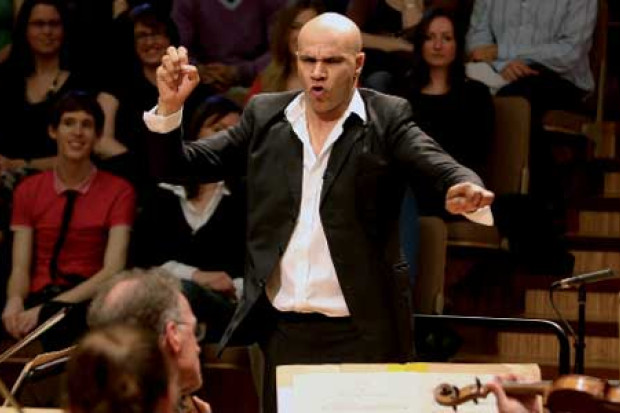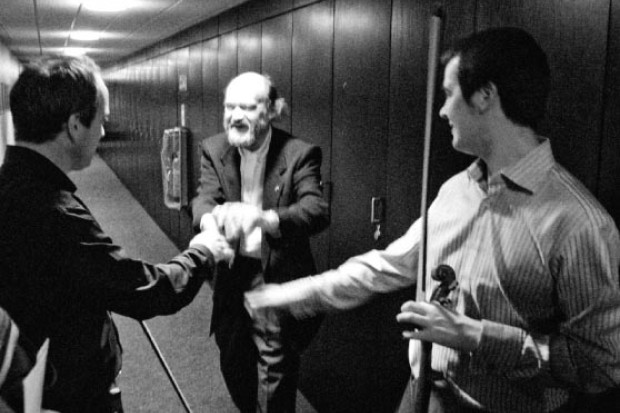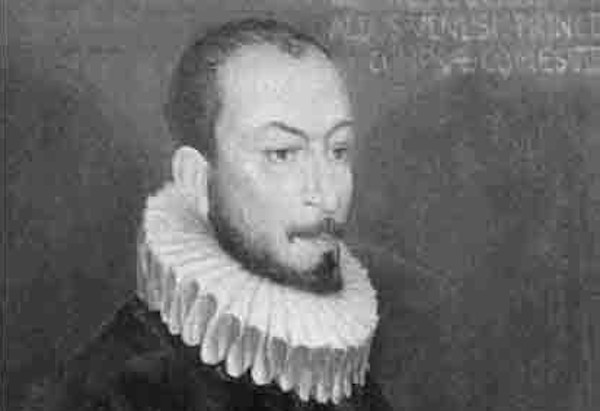
Beyond Murder
“Our ahistorical postmodern age, with its mistrust of continuities and grand narratives, has paradoxically allowed the reinsertion of Gesualdo into musical history.” A new book on the composer shows that he was centuries ahead of his time, writes Raymond Deane.
Carlo Gesualdo, prince of Venosa, is a composer whose daring music and chaotic life have gained him a reputation as an anomalous figure, centuries ahead of his time, whose art, unprecedented and without immediate succession, ‘end[ed] up a blind alley’ (Susan McClary).
Glenn Watkins is a US author and musicologist who has co-edited Gesualdo’s complete works. In The Gesualdo Hex: Music, Myth, and Memory he contests the above assessments without minimising his subject’s uniqueness, placing him firmly in the context of Italian music and society at the end of the Renaissance, and meditating on his links to modernism and postmodernism.
The Gesualdo Hex starts with a review of the known facts about Gesualdo’s life. He was born in 1566, not 1561 as hitherto surmised, and died aged 47 in 1613. He was related to both Carlo Borromeo, architect of the Italian Counter-Reformation, and Pope Pius IV. In Naples in 1590 Gesualdo murdered his first wife, Maria D’Avalos, and her lover. That a monk had violated Maria’s dead body and that Gesualdo had killed her undocumented second child by swinging it to death were but two of many subsequent embroideries.
Watkins tells us that ‘in Gesualdo’s time there existed a social imperative for murder’ if the wronged husband was an aristocrat; such composers as Tromboncino, Rasi and Fontanelli had already availed of this privilege with impunity. Gesualdo’s status as wife-killer, therefore, was seen as no impediment to his being ‘a highly desirable prospect for marriage’. He duly wed Eleonora D’Este in 1594, thus aligning himself with the Este court at Ferrara, ‘the capital of chromaticism’.
Eleonora appears to have suffered unspecified abuse from early in their marriage. Even ‘darker biographical complications lurk[ed]’ after the couple re-settled in Gesualdo in 1597, entailing the composer’s persistent adultery as well as sensational allegations of witchcraft and poisoning, Gesualdo having almost succumbed to the revenge of a discarded mistress. This murky tale seems to have provided Watkins with his somewhat sensationalist title, although the ‘hex’ metaphor sometimes appears a little forced and inconsistent.
In his last years, according to a 1632 report, Gesualdo was ‘afflicted by a vast horde of demons… And in this state did he die miserably….’
Reflecting on the relationship between Gesualdo’s art and his tormented life, Watkins suggests that ‘it was Gesualdo’s confrontation with avant-garde developments in Ferrara that provided the catalyst for his change to a new and miraculous expression – not the murder of his first wife that drove him to madness and the composition of an unstable music’, although ‘personal experience would necessarily factor into his art’.
Watkins takes seriously Gesualdo’s claim that his madrigal collections ‘were all completed by age thirty (1596)’. The avant-garde fifth and sixth books constituted a pure example of musica riservata, ‘an advanced, frequently chromatic idiom written expressly for private use’, in this case by ‘the Este court and later Gesualdo’s circle in the south’. If Gesualdo consented to publish the last two madrigal books together with the Holy Week Responsoria two years before his death, it was because, in his own words, certain composers had ‘attributed to themselves many beautiful passages of the works’.
The prevailing assumption that the final madrigals represent Gesualdo’s ‘late style’ collapses, although the other sense of that modish phrase holds good: a style heralding the end of an era. Watkins stresses that ends and beginnings are not as clear-cut as they may seem: Gesualdo was both radical and conservative, exploring exorbitant harmonic possibilities while clinging to renaissance polyphonic models. It is the Tenebrae responsories that most truly display ‘late style’ in the personal sense, epitomising everything Gesualdo had learned of harmonic invention, contrapuntal ingenuity and expressivity.
Fascination with Gesualdo started shortly after his death and never entirely disappeared. While nurtured by sensationalism, this reputation has deeper roots. Gesualdo’s music, while bearing traces of sixteenth-century modality, represents an important step towards modern tonality precisely because it finds a sure path through chromatic mazes to its firm tonal cadences. Simultaneously, in Claudio Abbado’s words, Gesualdo ‘knew how to transfigure suffering with previously unheard harmonies…’. As Watkins puts it, ‘[a] powerful new dimension had been added to the world of music, and its full promise would continue to be excavated at varying levels of engagement over the next four hundred years.’
Watkins, then, sees Gesualdo as being both timely and untimely, isolated and influential, conservative and revolutionary. In the second and third parts of the book he seeks out parallels with those masters of modernism Schoenberg and Stravinsky.
Watkins tells us that it was the conjunction of two lectures he gave on successive days in 2003 – one on Gesualdo and the other on ‘the Leibowitz correspondence [with Arnold Schoenberg] and the softening position of Schoenberg’s late style’ – that ‘set the present study in motion’. The composer René Leibowitz had professed himself baffled by the dodecaphonic ‘inconsistencies’ of certain late Schoenberg works, comparing such vacillations to the survival of traces of modality within tonal music. He wrote to Schoenberg that ‘from the moment on when a new technique becomes conscious as such to the mind of a composer, it also becomes necessary to work out the extreme consequences of such a ‘state of affairs’.’ Schoenberg replied that he ‘would no longer consider the danger of resembling tonality as tragically as formerly.’
Watkins examines the tonal works that Schoenberg composed in the USA from 1937 onwards, concluding that, in terms of Adorno’s claim that late style entails either ‘intransigence and difficulty’ or ‘closure and resolution’, ‘Schoenberg’s bifocal take in his last years seems to permit both.’
Already in 1916 the composer and musicologist Egon Wellesz had compared Schoenberg to Gesualdo, wondering
‘[w]hether the paths which Schönberg treads are destined to become the highways of the music of the future, or whether they are just the last spurs of the old romantic music here grotesquely distorted to its extreme limits… The age which succeeded Gesualdo was interested in other problems and did not follow in the path pointed out by him… The same fate may be in store for Schönberg.’ Watkins suggests that both composers ‘were wedded to the working out of their mature visions within the received forms and in the alternate company of highly progressive… and more conservative languages….’
Stravinsky’s relationship with Gesualdo was more direct. He was introduced to his music by Robert Craft and participated in its revival from 1956 onwards, composing his Monumentum pro Gesualdo in 1960 at a time when he had appropriated aspects of Schoenberg’s twelve-note technique. Indeed he contributed the preface to Watkins’ 1973 book Gesualdo: The Man and his Music.
Stravinsky’s historical sense was postmodern, although ‘[p]ostmodernism as a term… had yet to surface to any extent prior to his death’. His ‘agglutinative approach to composition’ took him from Russophile primitivism through neo-classicism to a very ‘non-Viennese’ serialism. He told Robert Craft that composers are guided ‘by the free adoption of ancestors, and the choosing and pasting together of assorted bits and pieces of the past.’ Watkins points out that the Renaissance, to which Gesualdo owed allegiance while participating in its death-throes, itself claimed to be the ‘re-birth’ of an ancient Greek aesthetic which to some degree it invented. ‘Anachronistic distortion’ played an important role in the rediscovery of Gesualdo, and today’s revised image of the Renaissance as ‘a period of social and intellectual tensions and contradictions’ rather than a Golden Age of consolidation brings it closer in spirit to the age of Stravinsky and Schoenberg.
Watkins goes on to trace the obsession with Gesualdo in composers like Krenek, Hindemith, Ligeti, Boulez, Andriessen, Maxwell Davies, Schnittke, Sciarrino, Franz Hummel, and Klaus Huber; film-makers like Herzog and Bertolucci; and writers like Anatole France, Hildesheimer, Cortazar, David Pownall and Gustav Herling.
Gesualdo’s irrepressible and ongoing presence might appear vastly at odds with his reputation as a marginal figure whose experiments were ‘virtually without consequence’ (musicologist Carl Dahlhaus). For Watkins this prejudice implies a view of history as an uninterrupted succession of causes and immediate effects that occludes other forms of subterranean and discontinuous influence. Our ahistorical postmodern age, with its mistrust of continuities and grand narratives, has paradoxically allowed the reinsertion of Gesualdo into musical history.
Glenn Watkins was an instigator of the Gesualdo revival; with this book he stakes a renewed and eloquent claim for Gesualdo’s centrality while, almost incidentally, offering us an exhilarating and argumentative series of reflections on the nature of historiography, and indeed of history itself.
Glenn Watkins, The Gesualdo Hex: Music, Myth, Memory, Preface by Claudio Abbado, W. W. Norton and Company, New York & London – USA $39.95, ISBN 978-0-393-07102-3
Published on 1 April 2010
Raymond Deane is a composer, pianist, author and activist. Together with the violinist Nigel Kennedy, he is a cultural ambassador of Music Harvest, an organisation seeking to create 'a platform for cultural events and dialogue between internationals and Palestinians...'.













